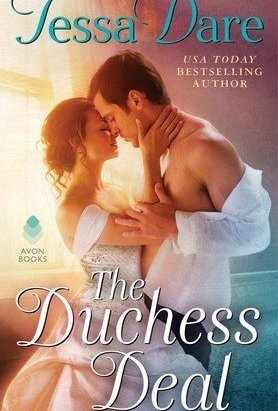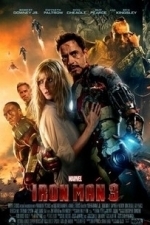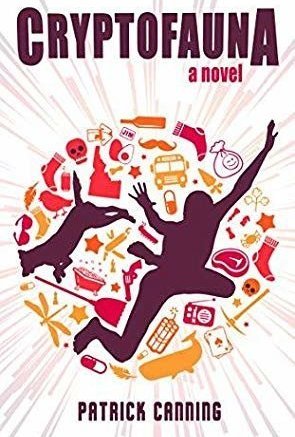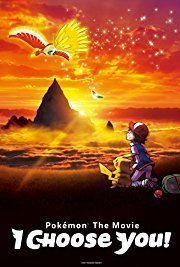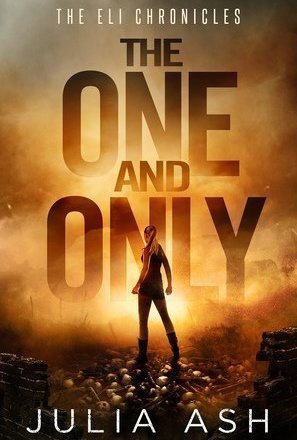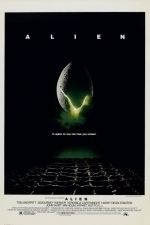Search
Search results
Sassy Brit (97 KP) rated The Duchess Deal in Books
Jun 6, 2019
^^ Returning from the war, scarred Duke of Ashbury decides he needs an heir, but that would mean a wife and she’d have to look upon his beastly war wounds, which would never do. So when he sets his sights on the vicar’s daughter Emma Gladstone and proposes a marriage of convenience deal, he begins to put some rules into place to protect her (or maybe himself) from seeing his disfigured body.
^^ But Emma is no fool, and insists on some rules of her own. She can see that beneath the scars, bad temper and his awfully stubborn ways, he’s quite simply just a lonely man needing companionship, and no different to her. Surely beauty is only skin deep and there’s much more to him than outward appearances.
^^ Oh, what a lovely story this is. Yes, on the surface this is what I’d call a sweet romance; a poor girl meets rich Duke love story. But deep down, below the surface of the title and cover, I uncovered some hidden gems. It’s a story of two lost souls trying to make the best of what they feel they have left to offer.
^^ The Duke is a great character, and yes, he does have his faults, and I’m not talking his appearance, but can he really be blamed after what he’s been through? The war has left the Duke scarred, physically and mentally. He may be a hero on the battlefield, but with his scars on show he’s found himself to be rather intimidating to others; children scream, dogs howl, honestly, if no one can bear to look at him, how is he ever going to produce an heir?
^^ Then we meet Emma, wise before her years, and not a woman to be messed around. But if that’s so, why would Emma choose to go into a loveless marriage with a man who only wants her for an heir? He’s already made it totally clear they’ll never have to sleep in the same bed ever again after their child is born. What on earth could possibly be in it for her? Well, maybe deep down, Emma’s not so confident after all. Perhaps, this wealthy Duke may be her last chance to have a child, and gain some security into her life. After all, if her father said “No decent man would ever want you!” as he banished her from their house, then maybe there’s some truth to it?
^^ I found myself thinking this is very much a charming Beauty and the Beast story. The way Emma and Ash get to know each other is both realistic and so endearing. This has some cracking dialogue with several laugh out loud moments, which made this such an enjoyable, fast read. I can’t wait to read more like this from Mills and Boon.
^^ Oh and I nearly forgot. It’s got it’s sexy bits in it too, and they are totally fitting and in line with this time period. What did make me smile, (and I thought it was a nice touch) was how, at the beginning of the book, there is a lovely dedication from the author (also once a vicar’s daughter) thanking her dad for being nothing like her character Emma’s father. Tessa Dare also mentions which chapters her father should miss out when reading. Don’t you realise that these pages will be where everyone visits first? ?
Overall: This is a charming Beauty and the Beast story, about love, honesty and mistakingly becoming the Monster of Mayfair! (Hilarious).
^^ But Emma is no fool, and insists on some rules of her own. She can see that beneath the scars, bad temper and his awfully stubborn ways, he’s quite simply just a lonely man needing companionship, and no different to her. Surely beauty is only skin deep and there’s much more to him than outward appearances.
^^ Oh, what a lovely story this is. Yes, on the surface this is what I’d call a sweet romance; a poor girl meets rich Duke love story. But deep down, below the surface of the title and cover, I uncovered some hidden gems. It’s a story of two lost souls trying to make the best of what they feel they have left to offer.
^^ The Duke is a great character, and yes, he does have his faults, and I’m not talking his appearance, but can he really be blamed after what he’s been through? The war has left the Duke scarred, physically and mentally. He may be a hero on the battlefield, but with his scars on show he’s found himself to be rather intimidating to others; children scream, dogs howl, honestly, if no one can bear to look at him, how is he ever going to produce an heir?
^^ Then we meet Emma, wise before her years, and not a woman to be messed around. But if that’s so, why would Emma choose to go into a loveless marriage with a man who only wants her for an heir? He’s already made it totally clear they’ll never have to sleep in the same bed ever again after their child is born. What on earth could possibly be in it for her? Well, maybe deep down, Emma’s not so confident after all. Perhaps, this wealthy Duke may be her last chance to have a child, and gain some security into her life. After all, if her father said “No decent man would ever want you!” as he banished her from their house, then maybe there’s some truth to it?
^^ I found myself thinking this is very much a charming Beauty and the Beast story. The way Emma and Ash get to know each other is both realistic and so endearing. This has some cracking dialogue with several laugh out loud moments, which made this such an enjoyable, fast read. I can’t wait to read more like this from Mills and Boon.
^^ Oh and I nearly forgot. It’s got it’s sexy bits in it too, and they are totally fitting and in line with this time period. What did make me smile, (and I thought it was a nice touch) was how, at the beginning of the book, there is a lovely dedication from the author (also once a vicar’s daughter) thanking her dad for being nothing like her character Emma’s father. Tessa Dare also mentions which chapters her father should miss out when reading. Don’t you realise that these pages will be where everyone visits first? ?
Overall: This is a charming Beauty and the Beast story, about love, honesty and mistakingly becoming the Monster of Mayfair! (Hilarious).
Gareth von Kallenbach (980 KP) rated Iron Man 3 (2013) in Movies
Jun 19, 2019
For Tony Stark, (Robert Downey Jr.), life has become very complicated for the self-proclaimed genius, philanthropist, billionaire, and playboy. In the new film “Iron Man 3”, Stark is wracked by insomnia and dread following the battle he waged to save New York in “The Avengers”.
Stark throws himself into his work and endlessly creates new Iron Man suits as well as system upgrades which currently have him at the Mark 42 version which is a huge jump from the Mark VII he was last seen in which was itself a prototype.
When a terrorist named The Mandarin (Sir Ben Kingsley), has unleashed a series of bizarre bombings on the world and has opening challenged the President (William Sadler), Stark is caught up in his own fears, most notably protecting his beloved Pepper (Gwyneth Paltrow).
When his friend Happy (John Farveau) is caught in an explosion, Stark openly challenges the Mandarin which results in a devastating helicopter upon Stark and Potts. With the world thinking he has died, Stark sets out to stop the Mandarin at all costs and find a way to battle his inner demons and fears to save the ones he loves and do what he knows is right.
The movie is big on laughs and character as we see a more well-rounded Stark this time out. He is haunted by demons of his past yet committed to improving himself and doing what is right. The film takes a bit of time to get up to speed, but thanks to Downey’s performance you maintain your interest as you are always waiting for what he will do next as he is in total command of the character and never lets the quirks or humor of his situation overshadow his humanity or undermine his performance.
I would have liked to have seen Downey is his armor more kicking butt and taking names, but thankfully the finale is very enjoyable. The converted 3D in the film is very good as although I am not a fan of 3D conversions this was the best I have seen to date as ash, snow, and debris did seem to float into the audience the way it does in films that are shot properly in the new 3D technology.
The supporting cast for the film is very strong especially Kingsley and Guy Pearce and I enjoyed the effort that Writer/Director Shane Black put into allowing the characters time to grow. I was a bit disappointed that Don Cheadle was not given a lot to do in his role especially when playing Iron Patriot/War Machine. The battle at the end of “Iron Man 2” where he and Iron Man took on legions of bad guys had me hoping for more this time out.
That being said, this is a very enjoyable summer movie that shows the franchise is not slowing down or taking the easy road out. There has been discussion that Downey Jr. may step away after the next Avengers film but hopefully that is not to be the case as I could not imagine another actor capturing the role as perfectly as he has.
Following a bonus post credits scene, we are told in the best James Bond style that Tony Stark will return, and you can bet legions of fans will be waiting.
http://sknr.net/2013/05/03/iron-man-3/
Stark throws himself into his work and endlessly creates new Iron Man suits as well as system upgrades which currently have him at the Mark 42 version which is a huge jump from the Mark VII he was last seen in which was itself a prototype.
When a terrorist named The Mandarin (Sir Ben Kingsley), has unleashed a series of bizarre bombings on the world and has opening challenged the President (William Sadler), Stark is caught up in his own fears, most notably protecting his beloved Pepper (Gwyneth Paltrow).
When his friend Happy (John Farveau) is caught in an explosion, Stark openly challenges the Mandarin which results in a devastating helicopter upon Stark and Potts. With the world thinking he has died, Stark sets out to stop the Mandarin at all costs and find a way to battle his inner demons and fears to save the ones he loves and do what he knows is right.
The movie is big on laughs and character as we see a more well-rounded Stark this time out. He is haunted by demons of his past yet committed to improving himself and doing what is right. The film takes a bit of time to get up to speed, but thanks to Downey’s performance you maintain your interest as you are always waiting for what he will do next as he is in total command of the character and never lets the quirks or humor of his situation overshadow his humanity or undermine his performance.
I would have liked to have seen Downey is his armor more kicking butt and taking names, but thankfully the finale is very enjoyable. The converted 3D in the film is very good as although I am not a fan of 3D conversions this was the best I have seen to date as ash, snow, and debris did seem to float into the audience the way it does in films that are shot properly in the new 3D technology.
The supporting cast for the film is very strong especially Kingsley and Guy Pearce and I enjoyed the effort that Writer/Director Shane Black put into allowing the characters time to grow. I was a bit disappointed that Don Cheadle was not given a lot to do in his role especially when playing Iron Patriot/War Machine. The battle at the end of “Iron Man 2” where he and Iron Man took on legions of bad guys had me hoping for more this time out.
That being said, this is a very enjoyable summer movie that shows the franchise is not slowing down or taking the easy road out. There has been discussion that Downey Jr. may step away after the next Avengers film but hopefully that is not to be the case as I could not imagine another actor capturing the role as perfectly as he has.
Following a bonus post credits scene, we are told in the best James Bond style that Tony Stark will return, and you can bet legions of fans will be waiting.
http://sknr.net/2013/05/03/iron-man-3/
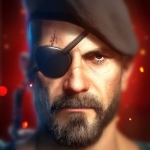
Invasion: Modern Empire
Games and Entertainment
App
Selected by Facebook as one of BEST MOBILE GAMES Invasion: Modern Empire is an online war-themed...
Ivana A. | Diary of Difference (1171 KP) rated Cryptofauna in Books
Aug 3, 2020
<a href="https://amzn.to/2Wi7amb">Wishlist</a>; | <a
<a href="https://diaryofdifference.com/">Blog</a>; | <a href="https://www.facebook.com/diaryofdifference/">Facebook</a>; | <a href="https://twitter.com/DiaryDifference">Twitter</a>; | <a href="https://www.instagram.com/diaryofdifference/">Instagram</a>; | <a href="https://www.pinterest.co.uk/diaryofdifference/pins/">Pinterest</a>;
<img src="https://i0.wp.com/diaryofdifference.com/wp-content/uploads/2020/05/Book-Review-Banner-57.png?resize=768%2C432&ssl=1"/>;
Cryptofauna by Patrick Canning is definitely a read that will certainly stay in your memory, for how unique and random it is.
<b><i>Synopsis</i></b>
Jim is a janitor at an insane asylum and one day, he decides to commit a suicide at his workplace. But before he can do the deed, a mysterious resident at work equips him with a dog and a bag of ash, and throws him into a secret game known as Cryptofauna.
Cryptofauna is played by Operators, people with special abilities, who battle one another to influence important events around the world. To become an Operator, Jim must successfully pass a couple of exams, including surviving the Pacific Ocean, surviving some weird monks, and ultimately, passing the exam that proves his mind and soul are ready as well.
On top of this, there is his enemy as well, another Operator, who is forever his rival until the game ends.
This is how Cryptofauna works, in case you are curious. The image was sent to me by the author:
<img src="https://i2.wp.com/diaryofdifference.com/wp-content/uploads/2020/05/How-To-Play.jpg?resize=768%2C994&ssl=1"/>;
<b><i>My Thoughts:</i></b>
From the synopsis, I expected this book to be unique. However, I never expected to enter such a creative and random world. The events are all so random, the characters too. It is all very random and chaotic in a very interesting way. I am still struggling to decide whether I love this chaos or not.
This book is amazing in terms of creativity and world building.
The author is quite good at creating something new in a place where everything already exists. Patrick Canning managed to create a whole new reality within our real world. A place where Cryptofauna exists as a game and a way of life, and I was glad I entered that world.
There were times I felt very confused on what is happening. I had to re-read chapters and scenes, which resulted in average reading experience. I liked Jim as a character, and I loved how he slowly develops throughout the book and finds his true purpose in his life. As a person that was about to commit suicide, I felt he learned a valuable lesson to not give up. However I felt that the other characters had more liveliness in them (no pun intended, given the fact he wanted to kill himself). I actually loved the evil guy more. He had a recklessness about him that I found intriguing.
Overall, I did enjoy the creativity and the idea of the game itself. However, I felt very lost and confused at certain times, which made my experience less enjoyable. I still recommend it to you, if the synopsis intrigues you and you enjoy stories about good battling evil.
Thank you to the author, Patrick Canning, for sending me a copy of this book in exchange for an honest review.
<a href="https://diaryofdifference.com/">Blog</a>; | <a href="https://www.facebook.com/diaryofdifference/">Facebook</a>; | <a href="https://twitter.com/DiaryDifference">Twitter</a>; | <a href="https://www.instagram.com/diaryofdifference/">Instagram</a>; | <a href="https://www.pinterest.co.uk/diaryofdifference/pins/">Pinterest</a>;
<img src="https://i0.wp.com/diaryofdifference.com/wp-content/uploads/2020/05/Book-Review-Banner-57.png?resize=768%2C432&ssl=1"/>;
Cryptofauna by Patrick Canning is definitely a read that will certainly stay in your memory, for how unique and random it is.
<b><i>Synopsis</i></b>
Jim is a janitor at an insane asylum and one day, he decides to commit a suicide at his workplace. But before he can do the deed, a mysterious resident at work equips him with a dog and a bag of ash, and throws him into a secret game known as Cryptofauna.
Cryptofauna is played by Operators, people with special abilities, who battle one another to influence important events around the world. To become an Operator, Jim must successfully pass a couple of exams, including surviving the Pacific Ocean, surviving some weird monks, and ultimately, passing the exam that proves his mind and soul are ready as well.
On top of this, there is his enemy as well, another Operator, who is forever his rival until the game ends.
This is how Cryptofauna works, in case you are curious. The image was sent to me by the author:
<img src="https://i2.wp.com/diaryofdifference.com/wp-content/uploads/2020/05/How-To-Play.jpg?resize=768%2C994&ssl=1"/>;
<b><i>My Thoughts:</i></b>
From the synopsis, I expected this book to be unique. However, I never expected to enter such a creative and random world. The events are all so random, the characters too. It is all very random and chaotic in a very interesting way. I am still struggling to decide whether I love this chaos or not.
This book is amazing in terms of creativity and world building.
The author is quite good at creating something new in a place where everything already exists. Patrick Canning managed to create a whole new reality within our real world. A place where Cryptofauna exists as a game and a way of life, and I was glad I entered that world.
There were times I felt very confused on what is happening. I had to re-read chapters and scenes, which resulted in average reading experience. I liked Jim as a character, and I loved how he slowly develops throughout the book and finds his true purpose in his life. As a person that was about to commit suicide, I felt he learned a valuable lesson to not give up. However I felt that the other characters had more liveliness in them (no pun intended, given the fact he wanted to kill himself). I actually loved the evil guy more. He had a recklessness about him that I found intriguing.
Overall, I did enjoy the creativity and the idea of the game itself. However, I felt very lost and confused at certain times, which made my experience less enjoyable. I still recommend it to you, if the synopsis intrigues you and you enjoy stories about good battling evil.
Thank you to the author, Patrick Canning, for sending me a copy of this book in exchange for an honest review.
Movie Metropolis (309 KP) rated Pokémon the Movie: I Choose You! (2017) in Movies
Jun 10, 2019
20th Birthday Tribute
For the uninitiated, let’s start with some key facts: Pokémon has been entertaining kids and the young at heart for 20 years. A phenomenon like no other in the 90s, Nintendo’s award-winning franchise has been a worldwide smash, and despite a dip in the late 00s, it shows no signs of slowing down.
With 19 movies under its belt, dozens of video games including the ridiculously popular Pokémon Go, and countless TV series, Pokémon is an occurrence that doesn’t come around too often. Now, to celebrate the brand’s 20th anniversary, Nintendo has released this; Pokémon the Movie: I Choose You! But does being the 20th film in the franchise mean it’s not worth a watch?
Acting as a soft reboot of sorts, Pokémon: I Choose You! follows franchise hero, Ash Ketchum from Pallet Town, as he starts out on his journey to catch as many Pocket Monsters as he can. For fans of the brand, what follows next needs no introduction; he meets Pikachu and the rest as they say, is history.
Or is it? Well, in this case, not so much. The basic story that delighted kids in the 90s has been slightly reset as we are taken through the pairs journey, meeting people and Pokémon that weren’t in the original 1st television series. This has both positive and negative results on the finished product.
The plot is as simple as you would expect from a children’s film and it’s clear that Nintendo are out to make as much money from this as possible. Pre-film adverts were all Pokémon related and the cost of a ticket for this particular showing was double the normal price.
Why? Well, this is the first Pokémon film to be released in the UK in 15 years. That’s not a milestone to be sniffed at, and it’s clear the producers, animators and orchestras have gone all out for this instalment.
The film itself is beautiful to look at. Pokémon has always been criticised for its rather lacklustre animation compared to other Anime features like Spirited Away, but I Choose You is right up there with the very best. It’s colourful and drips with detail. From gorgeous sunsets to damp caves, the animation comes alive.
Elsewhere, the score is nicely integrated into the film with a single, haunting piano playing through much of the succinct 98-minute runtime. The familiar theme tune that kids and adults have come to know and love over the years is given a lovely instrumental upgrade and this is when the flutters of nostalgia start to kick in.
Unfortunately, the removal of Ash’s companions, Brock and Misty, from the film undoes some of the hard work for this 20th anniversary as they were such an integral role in the first films and television show. However, newcomers Sorell and Verity each provide the story with a couple of different layers.
I Choose You also tugs at the heartstrings more than previous instalments. As the title suggests, this is about Ash’s journey with Pikachu and that doesn’t just include the happy times. Younger viewers may find some of the imagery on screen a little disturbing as we’re taken through an at times, dark and menacing backstory.
Overall, Pokémon the Movie: I Choose You! is a film that absolutely represents 20 years of the beloved series. With gorgeous animation and an intriguing change to the story that kids and adults have come to know, it’s definitely the best Pokémon movie out there. Let’s be frank, each of the films has been made to sell Pokémon toys and games, but never has it been done so beautifully.
https://moviemetropolis.net/2017/11/05/pokemon-the-movie-i-choose-you-review/
With 19 movies under its belt, dozens of video games including the ridiculously popular Pokémon Go, and countless TV series, Pokémon is an occurrence that doesn’t come around too often. Now, to celebrate the brand’s 20th anniversary, Nintendo has released this; Pokémon the Movie: I Choose You! But does being the 20th film in the franchise mean it’s not worth a watch?
Acting as a soft reboot of sorts, Pokémon: I Choose You! follows franchise hero, Ash Ketchum from Pallet Town, as he starts out on his journey to catch as many Pocket Monsters as he can. For fans of the brand, what follows next needs no introduction; he meets Pikachu and the rest as they say, is history.
Or is it? Well, in this case, not so much. The basic story that delighted kids in the 90s has been slightly reset as we are taken through the pairs journey, meeting people and Pokémon that weren’t in the original 1st television series. This has both positive and negative results on the finished product.
The plot is as simple as you would expect from a children’s film and it’s clear that Nintendo are out to make as much money from this as possible. Pre-film adverts were all Pokémon related and the cost of a ticket for this particular showing was double the normal price.
Why? Well, this is the first Pokémon film to be released in the UK in 15 years. That’s not a milestone to be sniffed at, and it’s clear the producers, animators and orchestras have gone all out for this instalment.
The film itself is beautiful to look at. Pokémon has always been criticised for its rather lacklustre animation compared to other Anime features like Spirited Away, but I Choose You is right up there with the very best. It’s colourful and drips with detail. From gorgeous sunsets to damp caves, the animation comes alive.
Elsewhere, the score is nicely integrated into the film with a single, haunting piano playing through much of the succinct 98-minute runtime. The familiar theme tune that kids and adults have come to know and love over the years is given a lovely instrumental upgrade and this is when the flutters of nostalgia start to kick in.
Unfortunately, the removal of Ash’s companions, Brock and Misty, from the film undoes some of the hard work for this 20th anniversary as they were such an integral role in the first films and television show. However, newcomers Sorell and Verity each provide the story with a couple of different layers.
I Choose You also tugs at the heartstrings more than previous instalments. As the title suggests, this is about Ash’s journey with Pikachu and that doesn’t just include the happy times. Younger viewers may find some of the imagery on screen a little disturbing as we’re taken through an at times, dark and menacing backstory.
Overall, Pokémon the Movie: I Choose You! is a film that absolutely represents 20 years of the beloved series. With gorgeous animation and an intriguing change to the story that kids and adults have come to know, it’s definitely the best Pokémon movie out there. Let’s be frank, each of the films has been made to sell Pokémon toys and games, but never has it been done so beautifully.
https://moviemetropolis.net/2017/11/05/pokemon-the-movie-i-choose-you-review/
Ivana A. | Diary of Difference (1171 KP) rated The One And Only in Books
Aug 20, 2018
When bio-terrorism threatens to obscure humanity, one woman has the power to restore hope.
Ruby Spencer is a wife and a mother. She also happens to be the only person that could save the people on Earth from dying! In moments when she is planning to resign from the U.S. Special Warfare Council, Ruby and her husband Clay are sent to one last mission.
With the last assignment being a low-risk mission to Taiwan where they need to analyze the zombie infection and consult with scientists, it seems like they are about to go on a long-deserved mini honeymoon.
But everything goes wrong! They get kidnapped, the biggest world powers all plan a war ahead, and it seems that only the ones that have Ruby are likely to win the war. They all fight over her, and she has no clue why. What makes her so special?
Review:
First of all, I have to thank the author, Julia Ash, for sending over this amazing book to me, in exchange for an honest review!
The beginning of The One and Only is extremely breathtaking! I believe that the beginning might be the best part of the book, actually! The flow of the story is well-thought, and I especially loved the scenes where the author refers to the past, and made me feel like there was another book before that. It is quite easy to catch up with the beginning and the brief details of the past, but if in the future there is a prequel that explains it all – I would love to be the first one to know about it!
Now, the characters are probably the reason that made the book the way it is! We have Ruby, who is our heroine, a brave lady, ready to give all the love, courage and wisdom in the world. She is a mother, a wife, and a brave fighter that never gives up and is never afraid to stand up against evil.
On the other hand, we have her husband – Clay. He was… alright. I suppose? His love for Ruby and their daughter is incredible, but somehow, I could think of him as a manly enough figure in their relationship. He was smart and brave, but not as smart and brave as Ruby.
I couldn’t somehow connect with him.
The character that intrigued me the most is Ox. I loved how Julia has shown us the psychological profile of this man, and the way he thinks. It was lovely reading about his part of his story, and even though he was on the wrong side, it is what he believes in. And the way it is written in so extraordinary, that at times I could see myself giving him an excuse.
The only part that I couldn’t agree with, and I am refusing to accept is – THE ENDING! I will withdraw myself from spoilers, but that’s not how things should have ended! That is not the ending I wanted, that is not the ending I was hoping for. No, no, no. It made me upset, and angry, and I wanted to break something very bad! That was a huge disappointment for me and it changed my whole perception of the story and the book itself.
If you ever get the chance to read this book – you should expect a lot of twists, a lot of ups and downs, and if you are like me and are trying hard to not bite your nails – well, you’re about to fail. This is not your typical book about zombie apocalypse. This is not your usual book about a heroine being kidnapped. This is not your usual book of how a person saves the world. This will be nothing like you expected, and everything you hoped for.
Ruby Spencer is a wife and a mother. She also happens to be the only person that could save the people on Earth from dying! In moments when she is planning to resign from the U.S. Special Warfare Council, Ruby and her husband Clay are sent to one last mission.
With the last assignment being a low-risk mission to Taiwan where they need to analyze the zombie infection and consult with scientists, it seems like they are about to go on a long-deserved mini honeymoon.
But everything goes wrong! They get kidnapped, the biggest world powers all plan a war ahead, and it seems that only the ones that have Ruby are likely to win the war. They all fight over her, and she has no clue why. What makes her so special?
Review:
First of all, I have to thank the author, Julia Ash, for sending over this amazing book to me, in exchange for an honest review!
The beginning of The One and Only is extremely breathtaking! I believe that the beginning might be the best part of the book, actually! The flow of the story is well-thought, and I especially loved the scenes where the author refers to the past, and made me feel like there was another book before that. It is quite easy to catch up with the beginning and the brief details of the past, but if in the future there is a prequel that explains it all – I would love to be the first one to know about it!
Now, the characters are probably the reason that made the book the way it is! We have Ruby, who is our heroine, a brave lady, ready to give all the love, courage and wisdom in the world. She is a mother, a wife, and a brave fighter that never gives up and is never afraid to stand up against evil.
On the other hand, we have her husband – Clay. He was… alright. I suppose? His love for Ruby and their daughter is incredible, but somehow, I could think of him as a manly enough figure in their relationship. He was smart and brave, but not as smart and brave as Ruby.
I couldn’t somehow connect with him.
The character that intrigued me the most is Ox. I loved how Julia has shown us the psychological profile of this man, and the way he thinks. It was lovely reading about his part of his story, and even though he was on the wrong side, it is what he believes in. And the way it is written in so extraordinary, that at times I could see myself giving him an excuse.
The only part that I couldn’t agree with, and I am refusing to accept is – THE ENDING! I will withdraw myself from spoilers, but that’s not how things should have ended! That is not the ending I wanted, that is not the ending I was hoping for. No, no, no. It made me upset, and angry, and I wanted to break something very bad! That was a huge disappointment for me and it changed my whole perception of the story and the book itself.
If you ever get the chance to read this book – you should expect a lot of twists, a lot of ups and downs, and if you are like me and are trying hard to not bite your nails – well, you’re about to fail. This is not your typical book about zombie apocalypse. This is not your usual book about a heroine being kidnapped. This is not your usual book of how a person saves the world. This will be nothing like you expected, and everything you hoped for.
Sarah (7800 KP) rated It’s A Sin in TV
Feb 7, 2021
Outstanding drama
It’s A Sin is the latest drama from the mind of Russell T Davies, the man behind Queer as Folk, Cucumber and the revival of Doctor Who back in 2005. It follows a group of gay men and their friends in London from 1981 to 1991, depicting how the developing HIV and AIDS crisis impacted on their lives.
The series concentrates on 5 friends who meet in 1981 and move into a flat together. There’s outgoing and smart Ritchie (Olly Alexander), shy and mild mannered Colin (Callum Scott Howells), flamboyant Nigerian Roscoe (Omari Douglas), sweet Ash (Nathaniel Curtis) and outgoing, responsible Jill (Lydia West). It’s A Sin follows the friends as they party and lead promiscuous lifestyles over the 80s, only for the AIDS crisis to slowly weave its way into their lives and affect friends and colleagues closest to them. Each deals with the developing crisis in their own way: Jill fights for AIDS awareness and help for those that are suffering, whereas Ritchie remains in denial and spreads conspiracy theories about AIDS. But by 1991, the lives of the group and their families have been irrevocably changed.
It’s A Sin is a powerful drama about an emotive and serious subject. While it is not based on a completely true story (only Jill is loosely based on a real person, Jill Nalder, a friend of Davies), Russell T Davies has based this around his and his friends experiences of the AIDS crisis in the 80s and watching this you can really believe that these sorts of events happened across the 80s and 90s. The attitudes and experiences shown here, from the hedonistic lifestyles to the rampant denial and conspiracy theories, are terrifying and sadly a true to life depiction of the attitudes at the time, and make for a rather emotional and sometimes harrowing watch.
Despite the serious subject, It’s A Sin isn’t entirely sombre. It starts out as a story of friendship and fun and there are a lot of heartwarming scenes and a surprising amount of laughs. Some might think the uplifting side of this drama detracts from the seriousness of the AIDS crisis, but personally I found the lighthearted scenes helped balance the rather sobering seriousness, especially as the episodes gradually become more and more grave as the crisis progresses. Even the gay sex scenes are fun and made mostly for laughs rather than any sort of eroticism. It’s impressive that Davies has managed to pull off a series that seamlessly blends lighthearted entertainment with a serious topic, without making light of such a harrowing crisis.
It helps that the cast are fantastic. Olly Alexander, who I knew nothing about other than recognising a few Years and Years songs, is an absolute star and a standout as Ritchie. He’s charismatic and engaging and when he’s on screen, you can’t take your eyes off him. The rest of the main cast too are just as good, especially this being their first major tv role in the case of Howells and Douglas. They’re ably supported by a host of seasoned veterans, including Neil Patrick Harris as Colin’s work colleague, Stephen Fry as a closeted MP that Roscoe meets, and Keeley Hawes and Shaun Dooley as Ritchie’s parents. Hawes and Dooley are especially moving and ultimately surprising in the later episodes, when their true attitudes as parents are revealed. My only real criticism of this series is so minor it’s barely worth mentioning, but I did get a little frustrated that Ritchie’s full name was Ritchie Tozer, as this is the same name as Richie Tozier from Stephen King’s IT. Admittedly a different spelling, but it did grate on me a little throughout the episodes as it’s not exactly a common name.
However despite my reservations on character naming, It’s A Sin is a fantastic heartwarming yet sobering drama that can’t be faulted. It’s been a long time since I’ve seen anything so engaging and emotional.
The series concentrates on 5 friends who meet in 1981 and move into a flat together. There’s outgoing and smart Ritchie (Olly Alexander), shy and mild mannered Colin (Callum Scott Howells), flamboyant Nigerian Roscoe (Omari Douglas), sweet Ash (Nathaniel Curtis) and outgoing, responsible Jill (Lydia West). It’s A Sin follows the friends as they party and lead promiscuous lifestyles over the 80s, only for the AIDS crisis to slowly weave its way into their lives and affect friends and colleagues closest to them. Each deals with the developing crisis in their own way: Jill fights for AIDS awareness and help for those that are suffering, whereas Ritchie remains in denial and spreads conspiracy theories about AIDS. But by 1991, the lives of the group and their families have been irrevocably changed.
It’s A Sin is a powerful drama about an emotive and serious subject. While it is not based on a completely true story (only Jill is loosely based on a real person, Jill Nalder, a friend of Davies), Russell T Davies has based this around his and his friends experiences of the AIDS crisis in the 80s and watching this you can really believe that these sorts of events happened across the 80s and 90s. The attitudes and experiences shown here, from the hedonistic lifestyles to the rampant denial and conspiracy theories, are terrifying and sadly a true to life depiction of the attitudes at the time, and make for a rather emotional and sometimes harrowing watch.
Despite the serious subject, It’s A Sin isn’t entirely sombre. It starts out as a story of friendship and fun and there are a lot of heartwarming scenes and a surprising amount of laughs. Some might think the uplifting side of this drama detracts from the seriousness of the AIDS crisis, but personally I found the lighthearted scenes helped balance the rather sobering seriousness, especially as the episodes gradually become more and more grave as the crisis progresses. Even the gay sex scenes are fun and made mostly for laughs rather than any sort of eroticism. It’s impressive that Davies has managed to pull off a series that seamlessly blends lighthearted entertainment with a serious topic, without making light of such a harrowing crisis.
It helps that the cast are fantastic. Olly Alexander, who I knew nothing about other than recognising a few Years and Years songs, is an absolute star and a standout as Ritchie. He’s charismatic and engaging and when he’s on screen, you can’t take your eyes off him. The rest of the main cast too are just as good, especially this being their first major tv role in the case of Howells and Douglas. They’re ably supported by a host of seasoned veterans, including Neil Patrick Harris as Colin’s work colleague, Stephen Fry as a closeted MP that Roscoe meets, and Keeley Hawes and Shaun Dooley as Ritchie’s parents. Hawes and Dooley are especially moving and ultimately surprising in the later episodes, when their true attitudes as parents are revealed. My only real criticism of this series is so minor it’s barely worth mentioning, but I did get a little frustrated that Ritchie’s full name was Ritchie Tozer, as this is the same name as Richie Tozier from Stephen King’s IT. Admittedly a different spelling, but it did grate on me a little throughout the episodes as it’s not exactly a common name.
However despite my reservations on character naming, It’s A Sin is a fantastic heartwarming yet sobering drama that can’t be faulted. It’s been a long time since I’ve seen anything so engaging and emotional.

Plane Finder
Travel and Navigation
App
Plane Finder tracks planes in real time around the world. Watch live moving planes on a worldwide...
BankofMarquis (1832 KP) rated Alien (1979) in Movies
Feb 22, 2020
This classic holds up very, very well more than 40 years later
I convinced my cynical 19 year old to watch an "ancient" film (her phrase) - so I was careful with my choice. I know she likes horror, so thought I would try to see if she could be scared the old fashioned way and pulled the 1979 Sci-Fi/Horror classic ALIEN off the shelves to show her.
It scared the crap outta her.
Directed by Ridley Scott (more on him later) Alien tells the tale of a working-class deep space vehicle, returning home with a full cargo when they intercept a distress call at a distant, non-descript planet, they go to investigate and...
As told by Ridley Scott, based on a script and story by Dan O'Bannon, Alien is a masterwork in suspense and mood. Scott takes his time telling this story, setting up the feel and atmosphere, showing a gritty, working-man's vessel (and not a sleek silver and chrome shiny ship) where the people inside the craft are not heroes, but working class stiff's just trying to make a buck.
What surprised me this time around seeing this film is how deliberate (some would say slow) that the pacing of this film is - but, darn it all, if it doesn't work. The tension slowly builds so when violence/action happens it explodes and seems all the bigger due to the fact that it is coming out of silence.
The cast - a group of relative unknowns at the time - is stellar. In the DVD commentary, Director Scott said he spent quite a bit of time casting this film to ensure he had the right mix - and his work shows on screen. The 7 actors in this film work well together - and each one of them brings a real character to the screen that is interesting to watch.
Tom Skerrit (the film version of M*A*S*H) as laconic, laid back Captain Dallas and Yaphet Kotto (the villain in the James Bond flick LIVE AND LET DIE) as gruff, looking-for-a-buck mechanic Parker were the most well known of the 7 at the time of the release of the film - and they do bring some star power to the proceedings, but are met, evenly, by others like former child star Veronica Cartwright (Alfred Hitchcock's THE BIRDS), veteran character Actor Harry Dean Stanton ( THE ROSE) and John Hurt (THE ELEPHANT MAN). All 3 bring interesting characters - and faces - to the proceedings.
But...for me 2 the standouts in this cast is IAN HOLM (TIME BANDITS) as Science Officer Ash - a character with some "quirks" (to put it mildly) and, of course Sigourney Weaver (GHOSTBUSTERS) in her star making role as 3rd officer Ripley. I don't want to spoil anything in this film, but Weaver's Ripley is the type of strong female character - fighting the typical, chauvinistic male hierarchy - that was heretofore unknown/rarely seen in film and is the prototype of these types of characters to this day. Weaver's performance and the writing and direction of this character is that strong/groundbreaking that it continues to influence writing and filmmaking all these years later.
The 8th character in this film is the look and feel of the ship - the Nostromo - and the look and feel of the titular Alien character as brought to life in an Oscar winning effort in Visual Effects for the team of H.R. Giger, Carlo Rambaldi, Brian Johnson, Nick Allder and Dennis Ayling (based on drawings by Giger). This is truly remarkable, bravura and groundbreaking design and filmmaking - one that holds up very well more than 40 years later - made all the more astounding when you realize that these are all practical effects (CGI had not be invented yet) and the filmmakers had to rely on puppetry, editing, performance and what you don't see (but your mind thinks you do) to fill in the gaps.
It all works tremendously well - if you haven't seen this in awhile, do yourself a favor and watch it again. If you have never seen it, well...you are in for a treat.
Letter Grade: A+
10 Stars (out of 10) and you can take that to the Bank(ofMarquis)
It scared the crap outta her.
Directed by Ridley Scott (more on him later) Alien tells the tale of a working-class deep space vehicle, returning home with a full cargo when they intercept a distress call at a distant, non-descript planet, they go to investigate and...
As told by Ridley Scott, based on a script and story by Dan O'Bannon, Alien is a masterwork in suspense and mood. Scott takes his time telling this story, setting up the feel and atmosphere, showing a gritty, working-man's vessel (and not a sleek silver and chrome shiny ship) where the people inside the craft are not heroes, but working class stiff's just trying to make a buck.
What surprised me this time around seeing this film is how deliberate (some would say slow) that the pacing of this film is - but, darn it all, if it doesn't work. The tension slowly builds so when violence/action happens it explodes and seems all the bigger due to the fact that it is coming out of silence.
The cast - a group of relative unknowns at the time - is stellar. In the DVD commentary, Director Scott said he spent quite a bit of time casting this film to ensure he had the right mix - and his work shows on screen. The 7 actors in this film work well together - and each one of them brings a real character to the screen that is interesting to watch.
Tom Skerrit (the film version of M*A*S*H) as laconic, laid back Captain Dallas and Yaphet Kotto (the villain in the James Bond flick LIVE AND LET DIE) as gruff, looking-for-a-buck mechanic Parker were the most well known of the 7 at the time of the release of the film - and they do bring some star power to the proceedings, but are met, evenly, by others like former child star Veronica Cartwright (Alfred Hitchcock's THE BIRDS), veteran character Actor Harry Dean Stanton ( THE ROSE) and John Hurt (THE ELEPHANT MAN). All 3 bring interesting characters - and faces - to the proceedings.
But...for me 2 the standouts in this cast is IAN HOLM (TIME BANDITS) as Science Officer Ash - a character with some "quirks" (to put it mildly) and, of course Sigourney Weaver (GHOSTBUSTERS) in her star making role as 3rd officer Ripley. I don't want to spoil anything in this film, but Weaver's Ripley is the type of strong female character - fighting the typical, chauvinistic male hierarchy - that was heretofore unknown/rarely seen in film and is the prototype of these types of characters to this day. Weaver's performance and the writing and direction of this character is that strong/groundbreaking that it continues to influence writing and filmmaking all these years later.
The 8th character in this film is the look and feel of the ship - the Nostromo - and the look and feel of the titular Alien character as brought to life in an Oscar winning effort in Visual Effects for the team of H.R. Giger, Carlo Rambaldi, Brian Johnson, Nick Allder and Dennis Ayling (based on drawings by Giger). This is truly remarkable, bravura and groundbreaking design and filmmaking - one that holds up very well more than 40 years later - made all the more astounding when you realize that these are all practical effects (CGI had not be invented yet) and the filmmakers had to rely on puppetry, editing, performance and what you don't see (but your mind thinks you do) to fill in the gaps.
It all works tremendously well - if you haven't seen this in awhile, do yourself a favor and watch it again. If you have never seen it, well...you are in for a treat.
Letter Grade: A+
10 Stars (out of 10) and you can take that to the Bank(ofMarquis)
